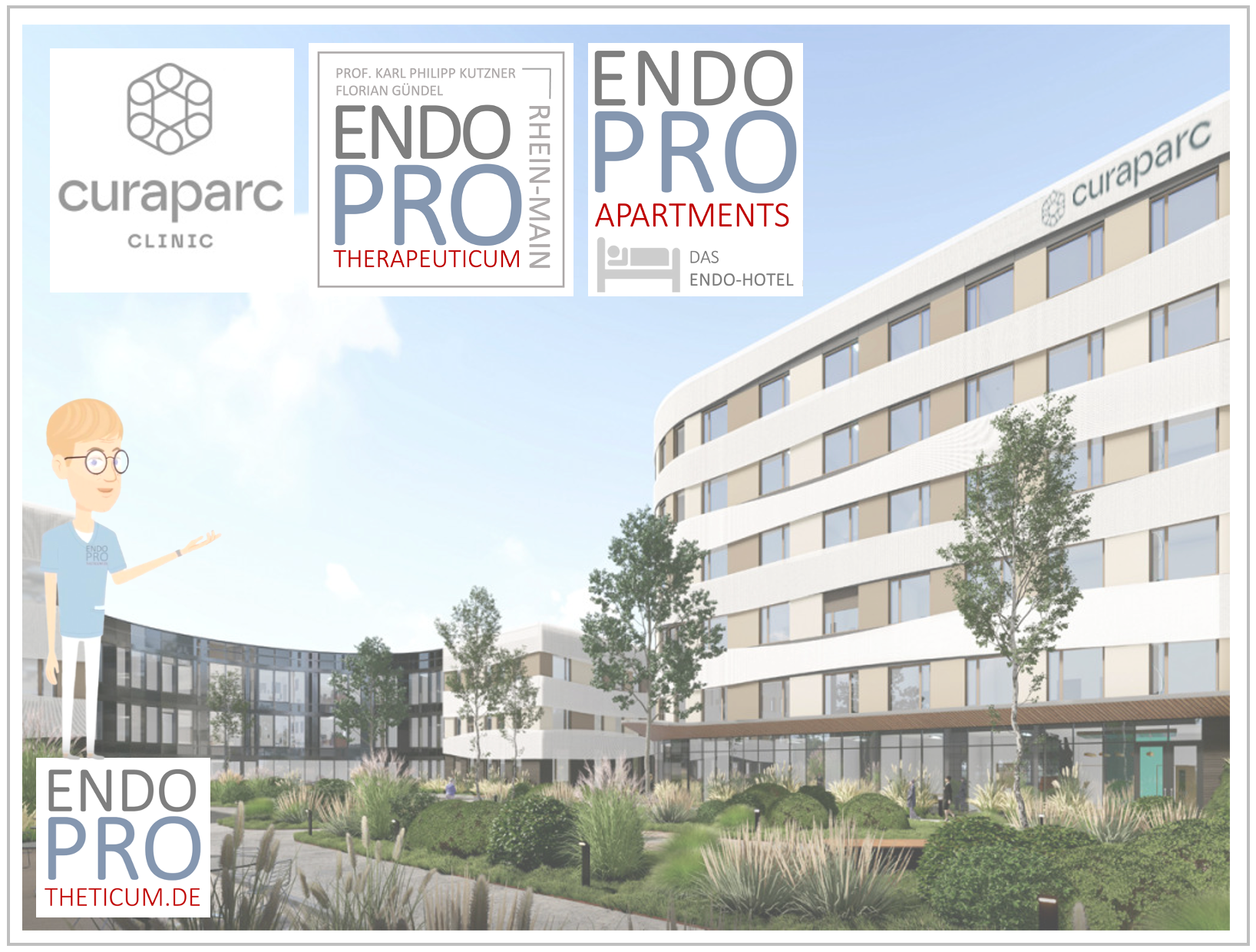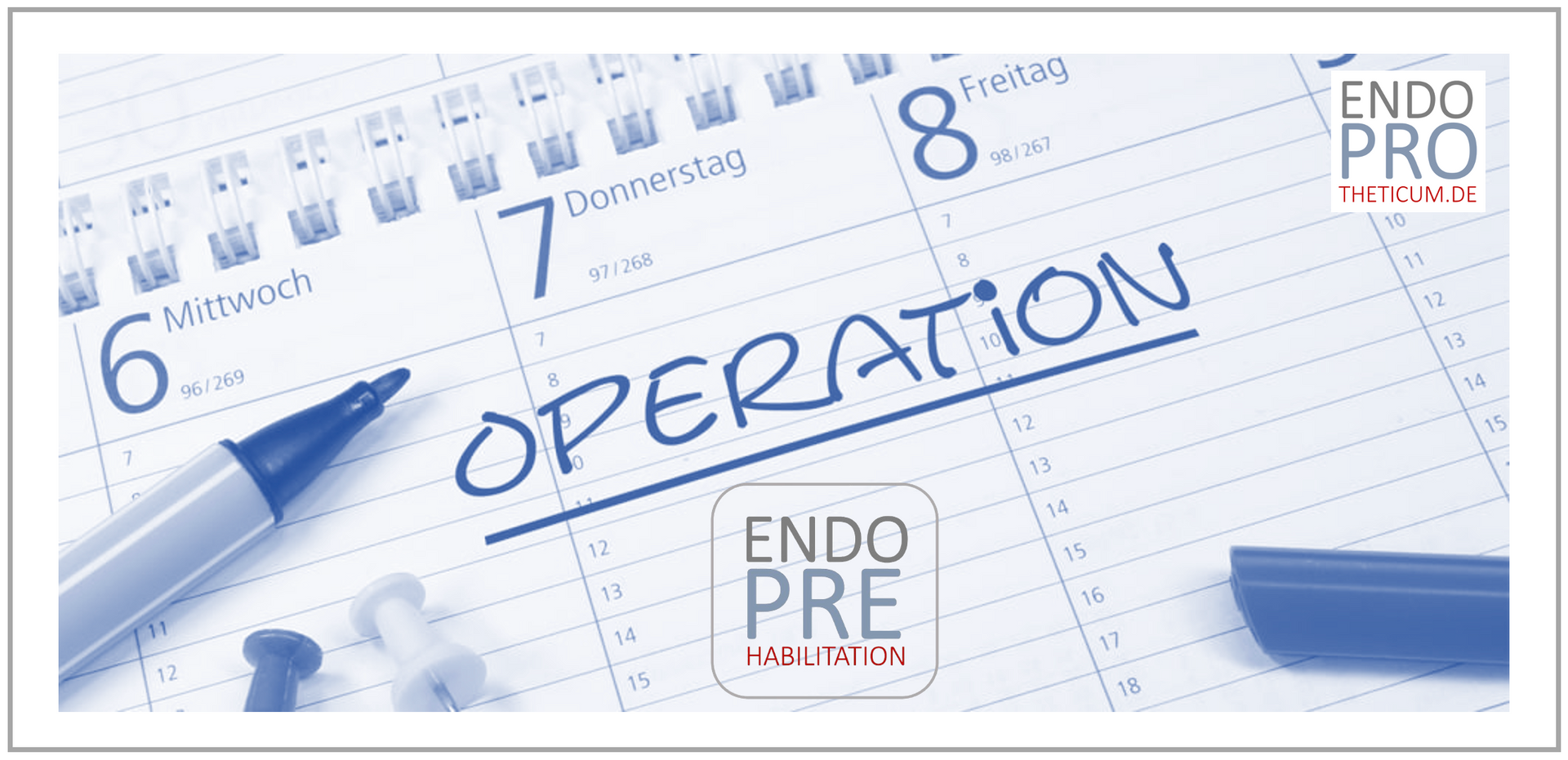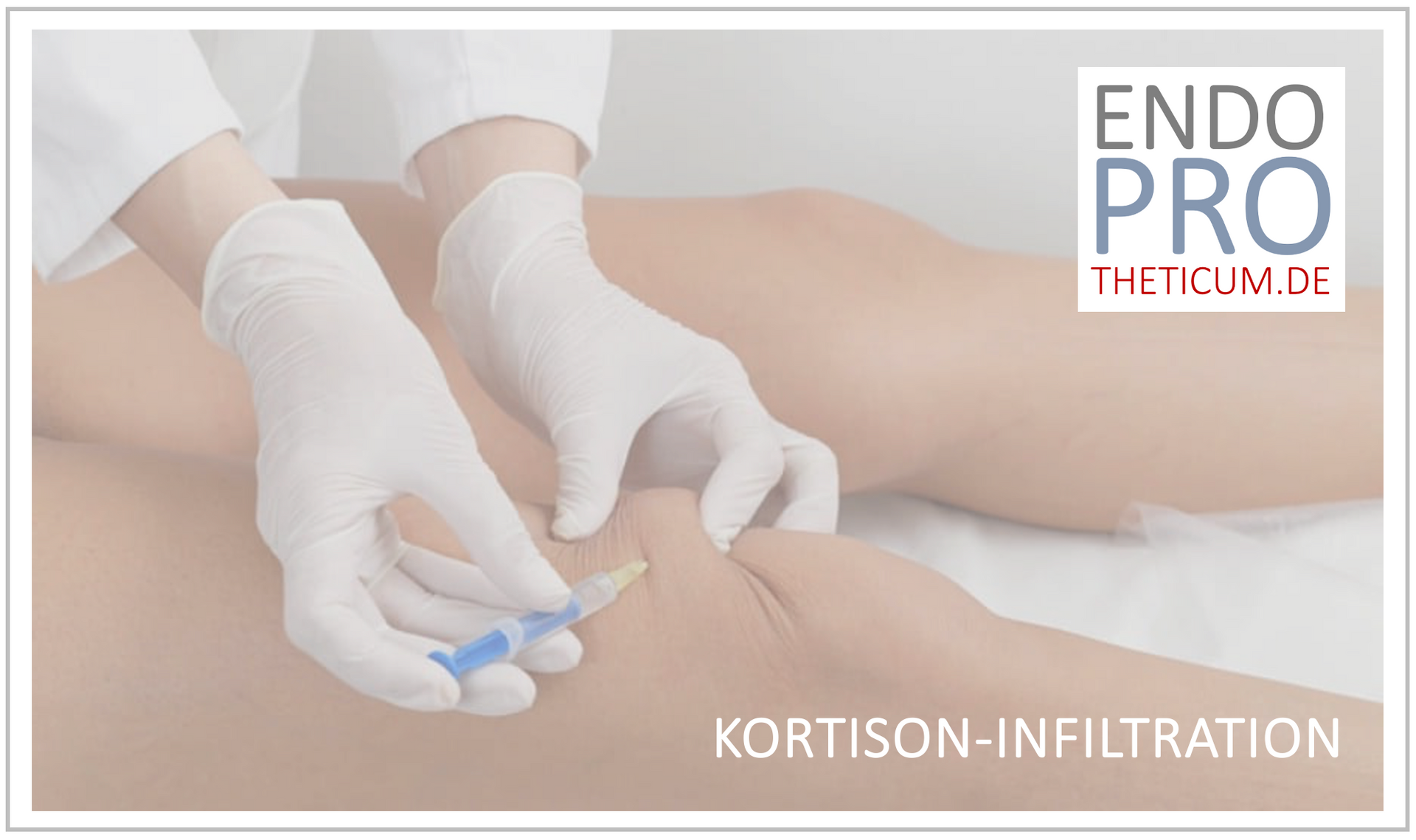Artificial joint in young people - when is it too early for a joint replacement?
Artificial joint replacement at a young age - exception or new reality?

A few decades ago, the artificial joint replacement a medical measure that was reserved exclusively older people - typically those over 65 who suffered from advanced osteoarthritis. But this view has changed drastically. Young patients , i.e. people under 55 or even under the age of 40, are increasingly deciding hip tep , knee-tep or sled prosthesis , because the pain, restrictions on movement and the restrictions in everyday life no longer leave any other options.
In an active society, in which physical mobility, sport, professional activity and quality of life represent central values, the call for a permanent joint replacement will also be louder even more recently . Many ask themselves: when is the right time? And when is it too early? This blog provides a well -founded, medically current and understandable answer to these questions.
Chapter 1: Definition - What is an artificial joint?
An artificial joint , also endoprosthesis , permanently replaces the function of a sick natural joint. It usually consists of metal alloys, ceramics or high-networked plastic (polyethylene) and is firmly anchored in the bone-either cement-free (press-fit), cemented or hybrid.
The most frequently used endoprostheses in Germany are:
- The hip totalendoprosthesis (Hip-Tep)
- The knee totalendoprosthesis (knee-tep)
- The partial joint replacement , e.g. B. the sled prosthesis with isolated osteoarthritis of a knee compartment
The aim of the joint replacement is to relieve pain, to restore the joint function and to improve the quality of life in the long term - regardless of age.
Building a endoprosthesis
Using the example of the hip-TEP, the basic construction can be explained well:
- Hip pan: is inserted into the pelvis, often made of titanium, sometimes with ceramic insert
- Hip: If you are anchored in the thigh bone, wear your head
- Head component: made of ceramic or metal, glides in the pan
With the knee prosthesis , a distinction is made between:
- Monocondylary prosthesis (sled prosthesis) - only replaces one joint share
- Bikondylary prosthesis (knee-tep) -replaces the entire joint (mostly femorotibial on both sides)
- Patellofemoral prosthesis - only for kneecap joint, rare
Chapter 2: Who is considered a "young" in the joint replacement?
The term "young" is not a fixed age limit in the endoprosthetics, but a relative concept. In the medical literature and clinical practice, the following divisions generally apply:
- <40 years - very young
- 40–55 years - young
- 55–65 years - middle age
- > 65 years - classic joint replacement area
artificial joint under 50 is particularly critically seen - not because it would not be technically feasible, but because in this age group the risk of premature loosening , later exchange operation (revision) and higher mechanical loads are particularly large.
But there are exceptions: Anyone who suffers from chronic pain that everyday life can no longer cope with has exhausted conservative therapies- even at the age of 30 or 40, they can receive a hip or knee prosthesis if the indication is correct.
Chapter 3: Numbers & Trends - Why more and more young people receive an artificial joint
The number of artificial joints in Germany has been increasing continuously for years - and the increase in younger patients . While the classic joint replacement was usually carried out over 65 years, more and more people under 60 , sometimes even under 40 , choose a hip tep , knee-tep or sled prosthesis .
Current statistics: knee and hip prostheses according to age groups
According to the Federal Association of Medical Technology (BVMed) and the Endoprosthesis Register Germany (EPRD):
- Around 450,000 joint replacement operations annually in Germany
- Of these, over 240,000 are on hip-tops , over 190,000 on knee-teps
- The proportion of patients under the age of 60 increases continuously-at Hip-Teps it is already over 15 %
- For knee prostheses, patients under the age of 65 even make around a third of cases
A particularly significant trend became visible in the United States: Between 2000 and 2017, the number of knee prostheses increased by 188 % , for hip prostheses by 123 % - and this trend is similar in Europe.
Why this increase?
Several factors explain why more and more young people choose a joint replacement :
- Active lifestyle
Many people remain active for longer - jogging, tennis, mountain hiking or crossfit lead to higher loads and thus also earlier joint wear. - Earlier diagnostics
thanks to MRI, arthroscopy and improved imaging are now recognized and documented. - Growing expectations of quality of life
young patients are not ready to live with pain and loss of function for decades. The desire for unrestricted lifestyle is greater than ever. - Improved implants and techniques of
modern prostheses last significantly longer today. Studies show survival rates of over 90 % after 20 years - this also makes them more attractive for younger patient groups. - Specialization of centers
highly specialized endoprosthetic centers such as the Endoprostheticum Mainz also enable complex care at a young age with individually adapted implants.
Typical scenarios
A sporty active man, 42 years old, has been suffering from post -traumatic knee arthrosis after an accident in youth for years. Conservative treatments no longer bring relief. A sled prosthesis offers him a way to live largely painlessly again - without having to do without sport. The decision is not easy, but it is the right step for him.
Anna, 34 years old, working, active in sports, mother of a toddler, has been suffering from bilateral hip dysplasia . Despite earlier joint -preserving operations and years of conservative therapy (physiotherapy, infiltrations, pain relievers), her condition deteriorated: the pain decreased, the flexibility, the limp was striking. After just a few minutes she had to stop, night pain interrupted sleep. Jogging, yoga or long sitting were hardly possible. Also a very difficult decision, but a supply by means of a short sector brings the patient back into life.
Chapter 4: When does a joint replacement in the young age are medically sensible?
The decision for an artificial joint in young age is always a weighing up between medical necessity , individual living conditions and the long -term consequences of an surgical intervention. While age was almost automatically seen as a counter -argument, modern orthopedic guidelines today see the suffering and functionality as crucial for the indication.
Important criteria for indication in young people
A joint replacement-be it a hip tep , knee-tep or a sled prosthesis -can be medically sensible for younger patients: if:
- Conservative therapy is exhausted:
physiotherapy, pain relievers, injections (e.g. hyaluron, cortisone), orthoses, weight reduction and other measures were used over at least 6 months - without continuing success. - There are severe restrictions in everyday life:
The joint causes such severe pain that everyday movements such as walking, climbing stairs or sitting are no longer possible - or only with medication. - Painful rest pain occurs:
pain that occurs even at night or in rest phases are serious warning signs for a serious joint pathology. - Imagination An advanced destruction shows:
X-ray or MRI images show pronounced arthrosis (stage III- IV according to Kellgren and Lawrence), joint deformities or axis deviations. - The quality of life suffers massively:
the social, family or professional life is significantly restricted by the broken joint.
Typical underlying diseases that make an endoprosthesis necessary at a young age
The cause of early joint wear is often not age -related , but is in certain previous illnesses. These include:
- Rheumatoid arthritis or other autoimmune diseases
- Congenital malpositions (e.g. hip dysplasia)
- Perthes or epiphyseal solution in childhood
- Aseptic bone necrosis (e.g. AVN of the hip head in cortisone therapy or alcohol abuse)
- Post -traumatic arthrosis after accidents or sports injuries
- Early meniscus or cartilage operations that lead to instability
- False load due to axis deviations (e.g. X-Bein or O-Bein)
- Chronic joint infections
These clinical pictures can lead to 30- to 40-year-olds that a joint replacement- often initially a partial joint replacement such as a sled prosthesis- is medically required.
Beware of misdiagnoses or overhanged decisions!
Especially in young patients: there is a risk of hasty indication or misjudgment of the cause of pain inside. It is essential to consider the following points:
- Not every pain means osteoarthritis - also soft tissue problems , such as. B. Patellaspitz syndrome , runner knee , trochanterbursitis or sacroiliacal joint blockades can cause severe symptoms.
- An exact clinical examination is essential. The clinical correlation for imaging must always be given.
- Patient: Inside, a second opinion a specialized center such as the endoprostheticum in Mainz before an endoprosthesis is implanted.
A joint replacement at the young age is not a wrong decision - if the indication is right . For many patients, it can even be a turning point for more quality of life, mobility and future perspective. careful consideration , specialized diagnostics and treatment by experienced endoprosthetic experts are crucial .
Chapter 5: Which prosthesis is the right one in the young age?
The choice of the right implant is particularly critical in younger patients. While long -term freedom of pain and fast rehabilitation are often in the foreground in older people, young people affected are also concerned with aspects such as durability, level of activity, bone savings and revision opportunities .
The aim must be to maintain the natural joint as long as possible , and if a replacement is inevitable as a tissue and modular . This requires precisely individual indication , sound experience and modern implant technology.
Total endoprosthesis vs. Partial joint replacement - when does what make sense?
1. The total endoprosthesis (knee-tep, hip-tep)
- Complete replacement of the joint
- With hip: replacement of the thigh head and the pan
- At knee: replacement of the top and lower leg joint area
- Advantages: long durability, proven technology, even with pronounced osteoarthritis
- Disadvantages: higher bone loss, possibly restriction with very sporty stress
Suitable for:
younger patients with multiple joint compartment arthrosis (e.g. femoropatellar and media gonarthrosis at the same time) or in rheumatic diseases
2. The sled prosthesis (unicondylary joint replacement)
- Replacement only of the medial or lateral joint share in the knee
- The healthy bone, band apparatus and cartilage in the rest are preserved
- Advantages: bone and soft tissue, faster rehabilitation potential, more natural movement management
- Disadvantages: not suitable for inflammatory diseases or advanced osteoarthritis in several joints
Suitable for:
younger patients with isolated medial or lateral gonarthrosis - often as a result of axis misalignment or meniscus loss
3. Patellofemoral joint replacement
- Special form of the partial denture with isolated osteoarthritis of the kneecap
- Often in dysplasia or kneecap misconduct at young age
Hip prostheses: cement -free, short sector or surface replacement?
a) cement-free hip-Tep
- Today standard for younger people
- Allows good to grow in the prosthesis in the bones (so-called "Press-Fit" technology)
- Particularly suitable for patients with good bone quality
- Advantages: better later revision opportunities
b) a short sector
- Specially developed for younger patients
- Saves bone substance on the thigh neck
- Better feeling of proprioception and biomechanically cheaper
- Particularly suitable for hip dysplasia or to Perthes
c) Surface substitute (resurfacing)
- Rare, but indicated in special cases (VA in young sporty men with good bone quality)
- Advantage: maximum bone savings
- Disadvantage: metal-metal connection and possible abrasion problem
Influencing factors in the dialing of the prosthesis in the young age
- Bone substance and bone quality
- Axis and malpositions
- Type of disease (e.g. degenerative vs. inflammatory)
- Professional requirements
- Sporting ambitions
- Body weight and mobility
- Individual anatomy (e.g. in dysplasia or leg long differences)
Why choosing the right implant is decisive
Especially for younger patients: the probability of revision surgery is significantly increased in the course of life Therefore, individual, farsighted planning is crucial. In specialized centers such as the endoprostheticum in Mainz, not only the right prosthesis is selected, but also the operating technology and the long-term strategy are individually coordinated.
Chapter 6: What young patients have to consider after the operation
An artificial joint in the young age means a crucial cut - but also a great chance of a new way of life, freedom of pain and mobility. So that the implant lasts as long as possible and complications are avoided, it is crucial what happens after the operation . Young patient: Inside, other demands on their lifestyle often place other people - and that is exactly what makes holistic aftercare so important.
The first phase after the operation: rehabilitation and mobilization
After a hip tep , knee-tep or sled prosthesis, rehabilitation usually begins on the day of the operation or the following day. In the Curaparc clinic in Mainz under the direction of Prof. Dr. med. Karl Philipp Kutzner is particularly important for quick, structured mobilization - adapted to the individual resilience and the type of prosthesis.
Typical process:
- Day 1: First mobilization with physiotherapy, initial steps with walking supports, full load mostly allowed from the start
- Week 1–2: Training of mobility, coordination, gaitbild
- Week 3–6: Stress increasing, building muscle power
- Week 6–12: Transition to normalcy, return to everyday ability
Goal: to be mobile again as early as possible without overloading the implant. The right level is important-and the close coordination between surgeon, physiotherapist and rehabilitation team.
Special requirements of young patients: inside with artificial joint
Unlike senior: Inside, many young people want to go back after the operation:
- to do sports
- be active professionally
- Children look after or raise
- Get vacation , travel or drive a car
- sometimes even competitive sports or physically demanding activities (e.g. craft, agriculture)
Therefore, a differentiated aftercare is crucial. As a rule, the following sporting activities after 3–6.
The individual sports release must always be carried out by the treating center.
Strategies for durability of the prosthesis
Even though modern hip and knee-teps a lifespan of 15 to 25 years , younger patients are almost always an increased risk of spring , abrasion or wear- solely exposed to their active life.
Tips for long -term prosthesis function:
- Avoidance of overweight:
Every kilogram body weight has 3–5 times on the joint.
Goal: keep BMI under 30. - Correct gait image:
Avoid incorrect loads by posture, use deposits or orthoses if necessary. - No high -performance sport:
Avoid shock loads (e.g. jumps, quick change of direction). - Physiotherapy for proprioception and stability:
especially with knee-tep or sled prosthesis to stabilize the band apparatus. - No more long -term pain in the pain necessary - but clarify quickly with new pain!
What about professional stress?
Many young patients: inside are in the middle of professional life. For physically demanding activities (e.g. care, construction, gastronomy), return after 2–4 months can be possible - sometimes with adjustments or retraining.
According to an endoprosthesis, the surgery success is only half the battle. Especially at a young age, the aftercare decisively decides on long -term success. If you stick to the recommendations, stay active - but not exaggerate - can lead a long, fulfilling and painless life with an artificial joint. Personal aftercare is the key to maximum durability and quality of life.
What distinguishes the endoprostheticum?
✅ specialization in modern endoprosthetics in young people
In contrast to many other facilities, the endoprostheticum is not a general hospital , but a highly specialized center for joint replacement. There is a special focus on complex cases, revision surgery and also the care of young patients in which other clinics hesitate or rapidly advise a total endoprosthesis.
✅ individual implant selection instead of "scheme f"
Thanks to the great experience of Prof. Kutzner and his team, modern, joint -preserving processes such as the sled prosthesis, the patellofemoral prosthesis or short -scale implants routinely offered. It is never operated on "blind" - but based on:
- Body construction and anatomy
- Professional and sporty stress
- Bone quality
- Type and extent of osteoarthritis
- Long -term perspective
✅ Use of the latest technologies
- Digital OP planning with 3D imaging
- Tissue -consuming minimally invasive techniques
- Special anesthesia procedures for maximum compatibility and fast mobilization
✅ Personal support from Prof. Dr. Kutzner himself
Many patients: Inside, the diagnosis, advice, operation and aftercare are accompanied by changing assistant doctors , but by Prof. Kutzner This ensures trust, security and high quality.
MAKE AN APPOINTMENT?
You are welcome to make an appointment either by phone or online .



























